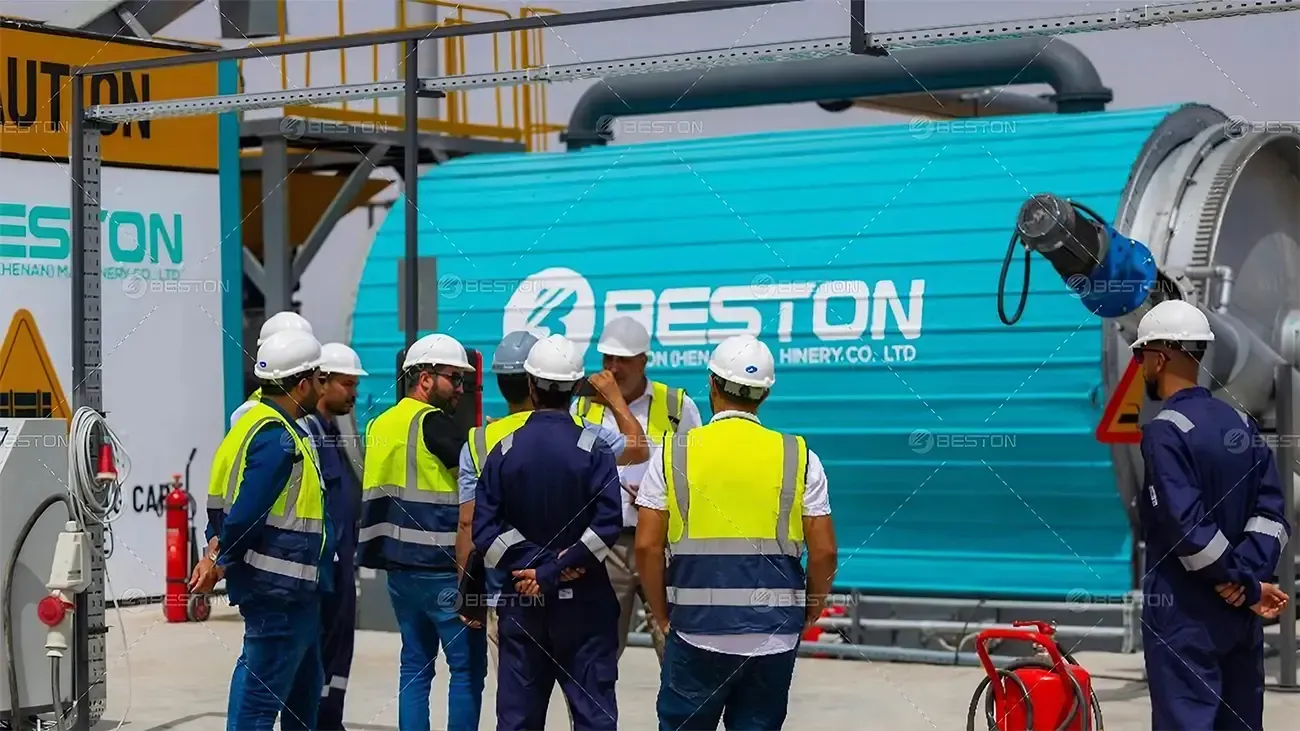Strategic Advantages of Thermal Desorption Units in Oily Sludge Recovery

Oily sludge, a hazardous by-product of petroleum extraction, refining, and storage, poses significant environmental and operational challenges. Rich in hydrocarbons yet contaminated with water, solids, and heavy metals, its management is tightly regulated and cost-intensive. Thermal desorption has emerged as a superior recovery method, with the thermal desorption unit (TDU) offering a controlled and efficient platform for resource reclamation. By integrating with pyrolysis plant principles, TDU systems combine environmental compliance with economic returns.
High Recovery Yield of Hydrocarbons
One of the primary advantages of a thermal desorption unit lies in its capacity to extract and recover valuable hydrocarbons from oily sludge. Under controlled heating, hydrocarbons are volatilized and condensed into reusable oil fractions. These recovered liquids can be refined into industrial-grade fuel or reintegrated into refinery operations.
Typical recovery rates range from 40% to 60% of the oil content, depending on sludge composition and process temperature. This significantly offsets disposal costs and creates a revenue stream from previously classified waste. In comparison to biological or chemical treatments, thermal desorption delivers a much higher material recovery ratio with minimal residual contamination.
Volume Reduction and Waste Minimization
Post-treatment residues from the thermal desorption process consist mainly of inert solids with substantially reduced hydrocarbon content—often meeting criteria for landfill acceptance or potential reuse in civil construction. This drastic reduction in hazardous volume diminishes long-term liability and disposal fees.
By decreasing the mass of waste requiring further handling, the TDU aligns with waste hierarchy principles and supports integrated waste management frameworks. Facilities processing oily sludge on-site can also avoid cross-border transport of hazardous waste, reducing emissions and regulatory complexity.
Closed-Loop, Environmentally Controlled Process
Modern TDU systems are designed as sealed, continuous or semi-continuous processing lines with advanced thermal control. In contrast to open incineration or landfilling, thermal desorption takes place in a contained environment, preventing fugitive emissions and uncontrolled combustion byproducts.
Exhaust gases pass through a multistage treatment system including cyclonic separators, condensers, and activated carbon filters. This ensures compliance with air quality standards and minimizes ecological disturbance. Integration with a pyrolysis plant further enhances energy efficiency by repurposing process gas for internal heating.
Compatibility with Diverse Sludge Types
Thermal desorption units are engineered to handle a broad spectrum of sludge compositions—ranging from refinery tank bottoms and oil-water separator residues to drilling muds and API sludge. The system can accommodate variations in water content, viscosity, and solid load without major modifications to the core process.
This adaptability reduces the need for upstream sludge homogenization and increases operational flexibility. It enables centralized treatment hubs to serve multiple waste generators, optimizing asset utilization and reducing per-ton treatment costs.
Enhanced Regulatory Compliance and Liability Reduction
The environmental liability associated with improper oily sludge disposal is significant, with potential penalties, remediation costs, and reputational damage. A TDU ensures destruction or recovery of hazardous constituents within regulated thresholds, simplifying permitting and audit processes.
Thermal desorption also supports compliance with international frameworks such as the Basel Convention and ISO 14001. When used in conjunction with automated documentation and emission monitoring systems, it provides traceable records of sludge treatment, aligning with ESG reporting and third-party verification requirements.
Integration with Decentralized Energy and Resource Networks
By leveraging the operational synergies of a pyrolysis plant, a thermal desorption unit can become part of a broader decentralized waste-to-resource network. Recovered oil may fuel boilers or turbines, while non-condensable gases can be used as supplementary energy sources. Residual solids, when processed further, can contribute to construction aggregates or be encapsulated for safe disposal.
This model aligns with industrial symbiosis and circular economy strategies, reducing dependency on virgin fuels and minimizing material waste. For remote or off-grid locations such as oil fields or drilling sites, TDU systems offer autonomous waste management without the need for extensive infrastructure.
Economic Justification in Oilfield and Refinery Operations
From an investment standpoint, thermal desorption units offer rapid return on capital when deployed near the waste generation source. Cost savings from avoided transport, regulatory compliance, recovered hydrocarbons, and waste minimization collectively enhance project viability.
Given rising scrutiny over hydrocarbon waste streams, the role of thermal desorption is transitioning from niche remediation to a core operational function. As environmental and energy regulations tighten, the integration of TDU within pyrolysis-based recovery systems will become a standard for responsible and profitable sludge management.
